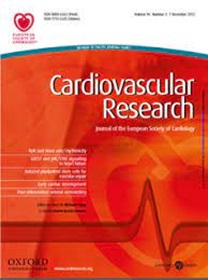关于心血管疾病环境危险因素的综合审查/专家声明。
IF 13.3
1区 医学
Q1 CARDIAC & CARDIOVASCULAR SYSTEMS
引用次数: 0
摘要
心血管疾病(CVD)是全球死亡的主要原因,每年有2000多万人死亡。虽然传统的风险因素——如高血压、糖尿病、吸烟和不良饮食习惯——已经确立,但新出现的证据强调了环境暴露对心血管健康的深远影响。空气污染,特别是细颗粒物(PM2.5),每年造成约830万人死亡,其中一半以上归因于心血管疾病。同样,噪音污染、极端高温、有毒化学物质和光污染也会通过氧化应激、炎症和昼夜节律紊乱等机制显著增加心血管疾病的风险。最近的转化和流行病学研究表明,长期暴露于运输噪声会增加心肌梗死、中风和心力衰竭的风险。空气污染,即使低于监管阈值,也会促进动脉粥样硬化、血管功能障碍和心脏事件。新的威胁,如微和纳米塑料正在出现的贡献者血管损伤和全身炎症。气候变化加剧了这些风险,热浪和野火进一步加重了心血管负担,特别是在脆弱人群中。这些接触的累积效应——通常与行为和社会经济风险因素相互作用——在目前的预防战略中没有得到充分解决。暴露框架提供了一种将终生环境暴露纳入心血管风险评估和预防的综合方法。缓解需要系统性的干预措施,包括更严格的污染标准、噪音法规、可持续的城市设计和绿色基础设施。解决心血管疾病的环境决定因素对于减轻全球疾病负担至关重要。本综述呼吁采取紧急政策行动,并将环境卫生纳入临床实践,以保障人类世的心血管健康。本文章由计算机程序翻译,如有差异,请以英文原文为准。
A comprehensive review/expert statement on environmental risk factors of cardiovascular disease.
Cardiovascular disease (CVD) is the leading cause of mortality globally, with over 20 million deaths each year. While traditional risk factors-such as hypertension, diabetes, smoking, and poor diet-are well-established, emerging evidence underscores the profound impact of environmental exposures on cardiovascular health. Air pollution, particularly fine particulate matter (PM2.5), contributes to approximately 8.3 million deaths annually, with over half attributed to CVD. Similarly, noise pollution, heat extremes, toxic chemicals, and light pollution significantly increase the risk of CVD through mechanisms involving oxidative stress, inflammation, and circadian disruption. Recent translational and epidemiological studies show that chronic exposure to transport noise increases the risk of myocardial infarction, stroke, and heart failure. Air pollution, even below regulatory thresholds, promotes atherosclerosis, vascular dysfunction, and cardiac events. Novel threats such as micro- and nano-plastics are emerging as contributors to vascular injury and systemic inflammation. Climate change exacerbates these risks, with heatwaves and wildfires further compounding the cardiovascular burden, especially among vulnerable populations. The cumulative effects of these exposures-often interacting with behavioural and socioeconomic risk factors-are inadequately addressed in current prevention strategies. The exposome framework offers a comprehensive approach to integrating lifelong environmental exposures into cardiovascular risk assessment and prevention. Mitigation requires systemic interventions including stricter pollution standards, noise regulations, sustainable urban design, and green infrastructure. Addressing environmental determinants of CVD is essential for reducing the global disease burden. This review calls for urgent policy action and for integrating environmental health into clinical practice to safeguard cardiovascular health in the Anthropocene.
求助全文
通过发布文献求助,成功后即可免费获取论文全文。
去求助
来源期刊

Cardiovascular Research
医学-心血管系统
CiteScore
21.50
自引率
3.70%
发文量
547
审稿时长
1 months
期刊介绍:
Cardiovascular Research
Journal Overview:
International journal of the European Society of Cardiology
Focuses on basic and translational research in cardiology and cardiovascular biology
Aims to enhance insight into cardiovascular disease mechanisms and innovation prospects
Submission Criteria:
Welcomes papers covering molecular, sub-cellular, cellular, organ, and organism levels
Accepts clinical proof-of-concept and translational studies
Manuscripts expected to provide significant contribution to cardiovascular biology and diseases
 求助内容:
求助内容: 应助结果提醒方式:
应助结果提醒方式:


